Last updated on
Discover essential tips to avoid slips and falls in the kitchen, ensuring a safer cooking environment for you and your family.
The kitchen is the heart of any home, where delicious meals are prepared and memories are made. However, it’s also one of the most dangerous areas in the house when it comes to slips and falls.
The combination of hard surfaces, water spills, and sharp objects can create a hazardous environment for anyone. Whether you’re a seasoned chef or just starting out in the kitchen, it’s important to take precautions to prevent accidents from happening.
In this article, we’ll share some practical tips on how to keep your kitchen safe and prevent slips and falls. So let’s get started!
What's Inside
Common Kitchen Hazards
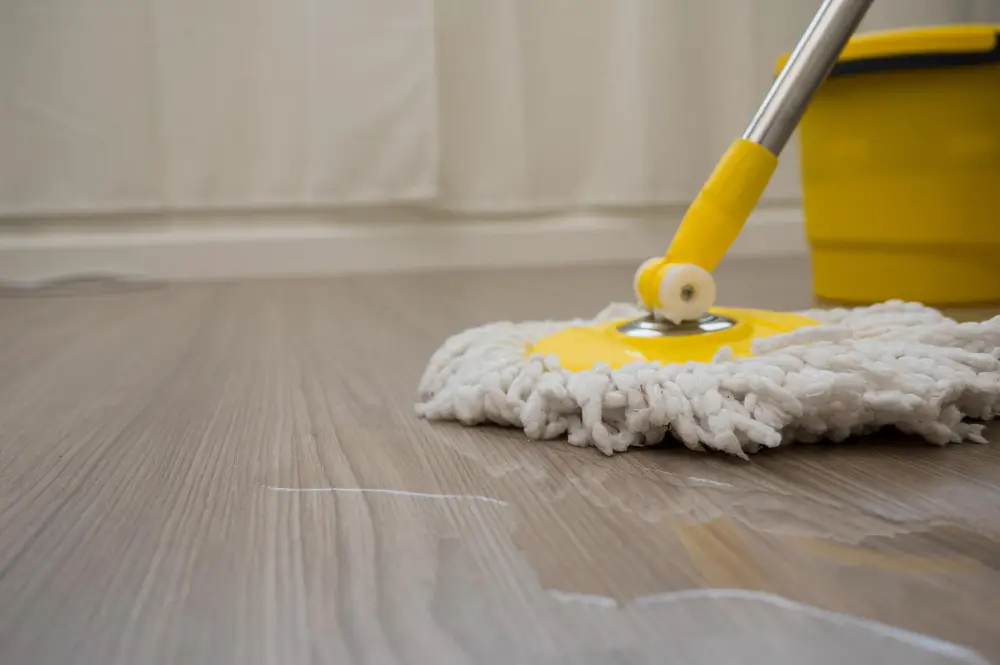
The kitchen is a place where accidents can happen in the blink of an eye. It’s important to be aware of common hazards that can lead to slips and falls, so you can take steps to prevent them.
One of the most significant risks in any kitchen is wet floors caused by spills or splashes from cooking or cleaning activities. Other potential hazards include cluttered walkways, sharp objects like knives and broken glassware, hot liquids such as boiling water or oil, heavy appliances that are not properly secured on countertops or shelves, and inadequate lighting.
Importance of Clean Floors
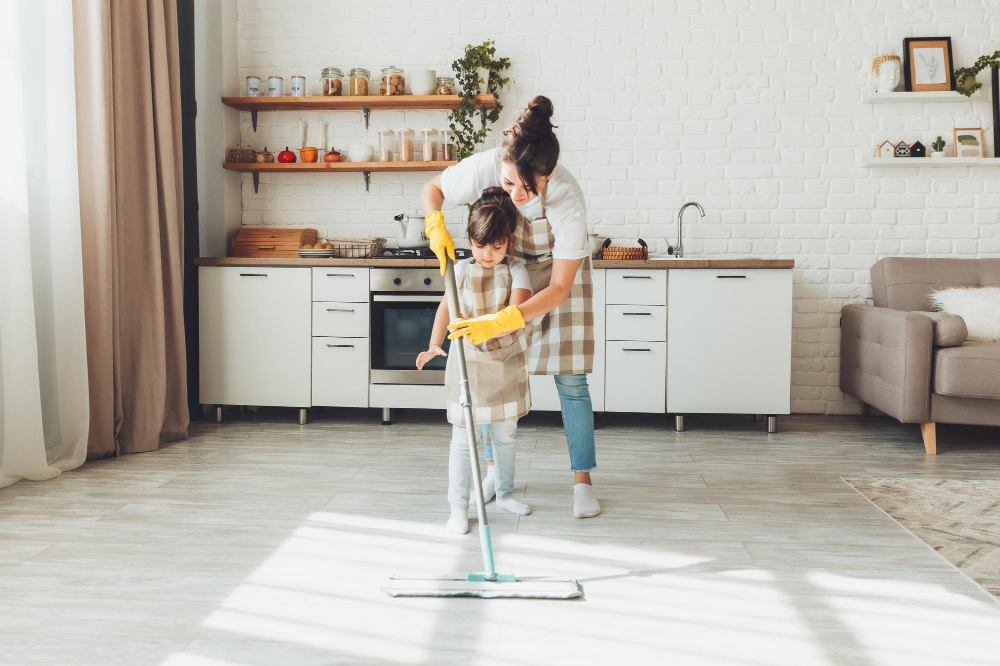
Dirty or wet floors can be extremely hazardous, especially when combined with spills or clutter. Regular sweeping, mopping, and drying are essential for maintaining a safe cooking environment.
It’s also important to pay attention to high-traffic areas such as entryways and around sinks where water is frequently used. These areas should be cleaned more often than other parts of the kitchen.
In addition to regular cleaning, it’s crucial that you choose appropriate flooring for your kitchen space. Non-slip tiles or vinyl flooring can provide better traction than hardwood or laminate options.
By keeping your floors clean and choosing non-slip materials, you’ll significantly reduce the risk of accidents occurring in your kitchen area.
Proper Kitchen Layout
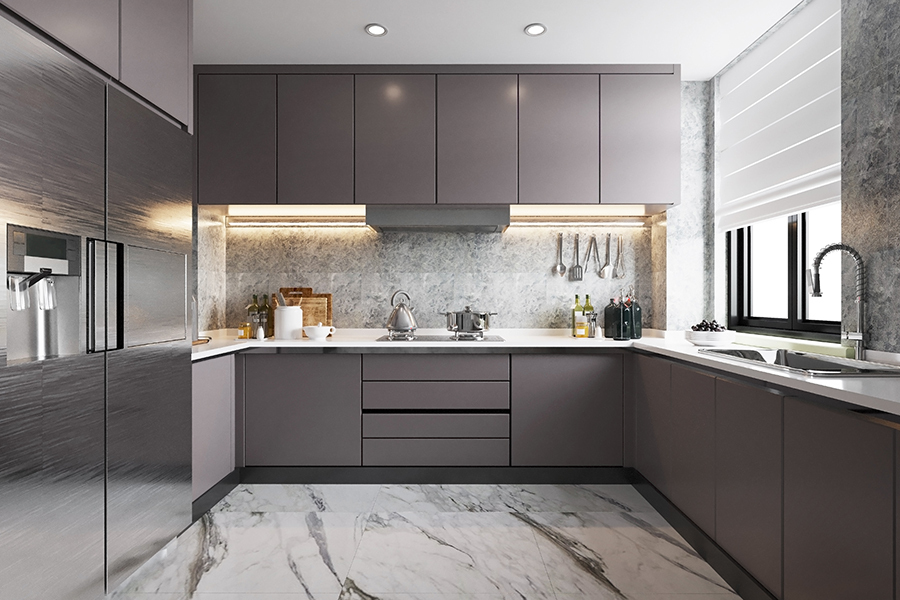
A well-designed kitchen should have enough space for movement, with appliances and cabinets arranged in an ergonomic manner. When planning your kitchen layout, consider the following:
1. Keep frequently used items within easy reach to avoid overreaching or bending.
2. Ensure that there is adequate counter space for food preparation.
3. Place heavy items such as pots and pans on lower shelves or drawers to prevent them from falling off high surfaces.
4. Avoid placing appliances near the edge of counters where they could be knocked off accidentally.
5. Make sure that walkways are wide enough to accommodate foot traffic without causing congestion or tripping hazards.
Choosing Anti-Slip Flooring
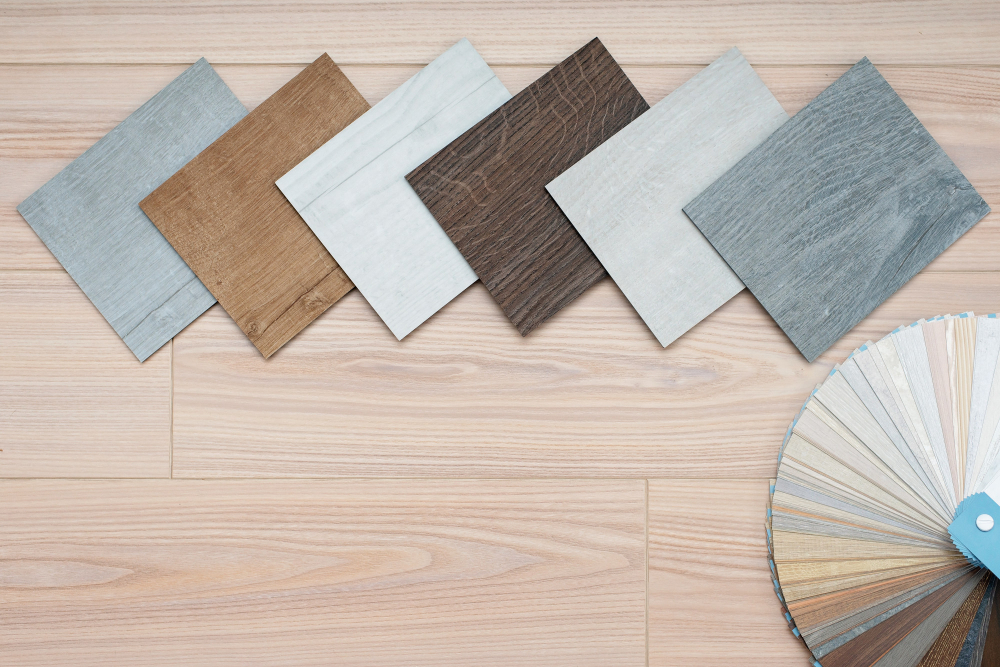
Anti-slip flooring can significantly reduce accidents by providing better traction underfoot. There are several types of anti-slip flooring available on the market, including vinyl, rubber, and cork.
Vinyl is a popular choice for kitchens because it’s affordable and easy to clean. It also offers excellent slip resistance when treated with an anti-slip coating or texture.
Rubber floors are another great option for high-traffic areas like kitchens as they provide superior slip resistance even when wet. They’re also durable and long-lasting but may require more maintenance than other options.
Cork floors offer natural cushioning that makes them comfortable to stand on while cooking or cleaning up after meals. They’re eco-friendly too! However, cork requires regular sealing to maintain its non-slip properties over time.
Reduce Floor Hazards
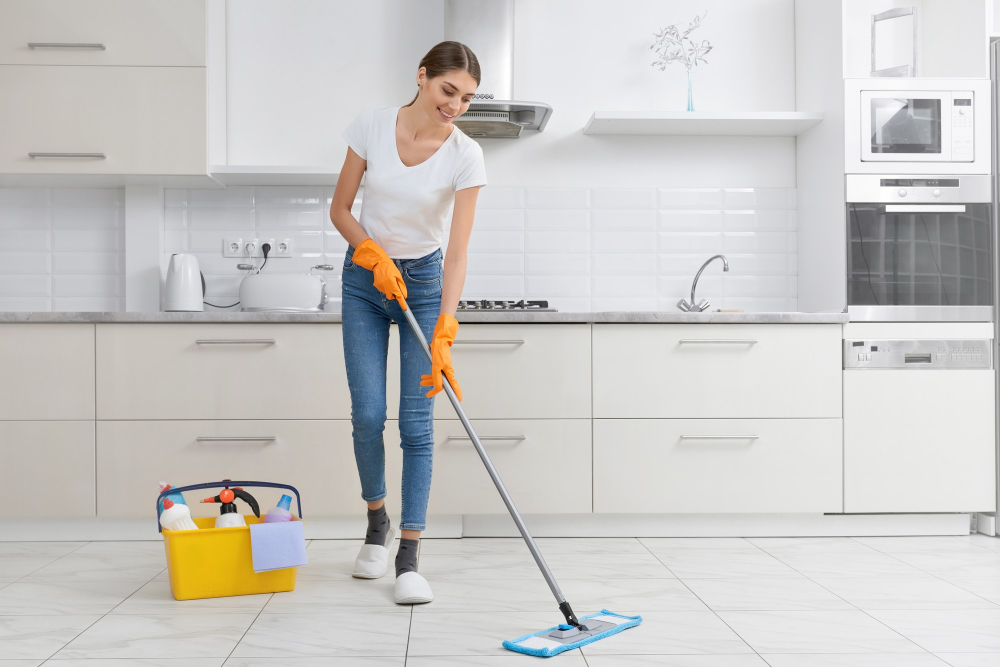
This can be achieved by ensuring that all floors are clean, dry, and free from clutter. Avoid using wax or polish on your kitchen floor as it can make it slippery.
Regularly sweep or vacuum your floors to remove any debris that could cause someone to trip. If you have pets at home, ensure their food bowls are placed away from walkways so they don’t spill water onto the floor.
Another way to reduce slipperiness is by using a non-slip coating on your flooring material. You may also consider installing anti-slip mats in areas where spills are more likely such as near sinks and stovetops.
By taking these simple steps, you’ll significantly reduce the risk of accidents happening in your kitchen due to slippery floors.
Keep Walkways Clutter-Free
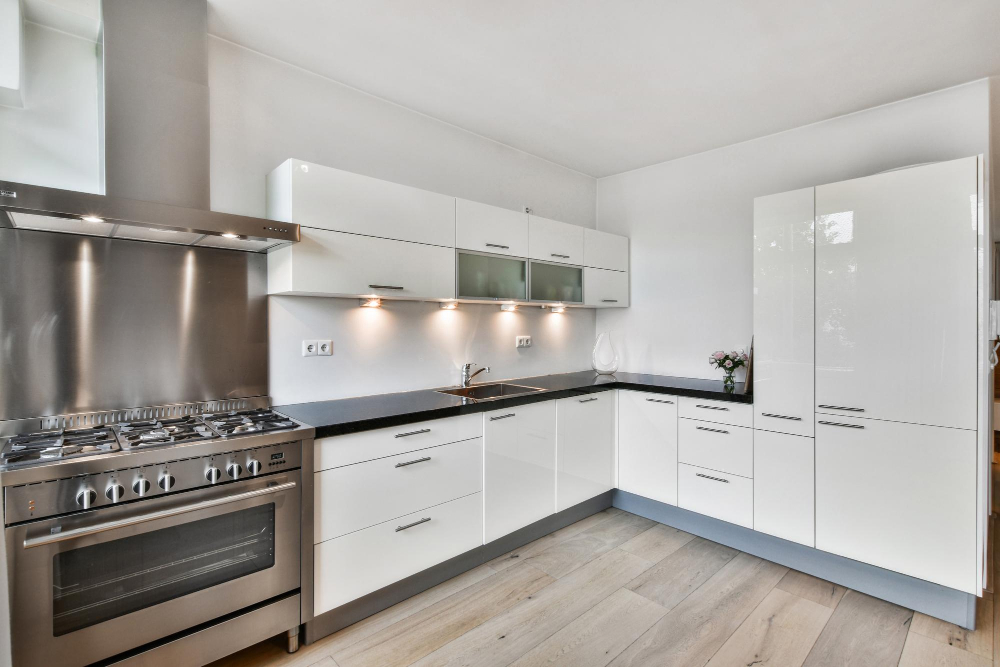
It’s essential to ensure that there are no obstacles or tripping hazards on your path, especially when carrying hot liquids or sharp objects. A simple way to achieve this is by organizing your kitchen layout effectively.
Start by identifying high-traffic areas in your kitchen, such as between the stove and sink or fridge and countertop. These areas should be kept clear at all times, with appliances stored away when not in use.
Next, consider investing in storage solutions like cabinets with pull-out drawers or shelves that can help keep items off the floor while still being easily accessible. You can also use wall-mounted racks for utensils instead of storing them on countertops.
Make sure you have adequate lighting throughout your kitchen so you can see any potential hazards clearly.
Non-Slip Mats & Rugs

These products are designed with a textured surface that provides extra grip, reducing the risk of accidents. Place them in areas where water or other liquids may spill, such as near sinks or stovetops.
When choosing non-slip mats and rugs for your kitchen, make sure they’re made from high-quality materials that can withstand frequent use and cleaning. Look for products with a rubber backing to keep them securely in place on your floors.
It’s also important to clean these mats regularly to maintain their effectiveness. Remove any debris or spills promptly so they don’t accumulate on the mat’s surface over time.
Dry & Wet Floor Care
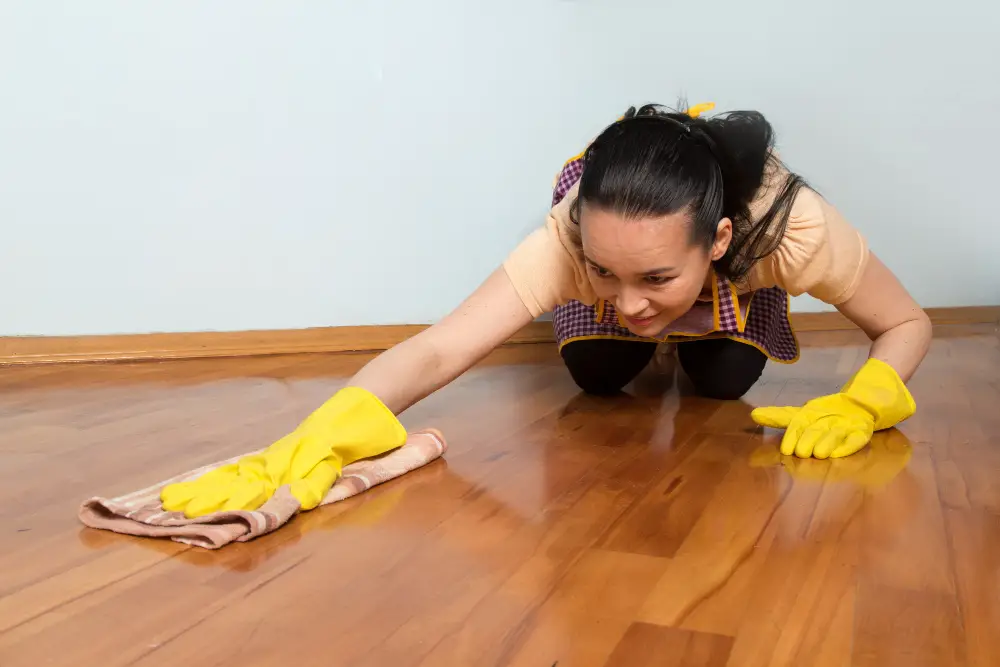
This means regularly sweeping or vacuuming up any crumbs, dirt, or debris that may accumulate on your floors. It’s crucial to address spills immediately by wiping them up with a clean cloth or paper towel.
When mopping your kitchen floor, make sure you use a non-slip cleaner specifically designed for hard surfaces. Avoid using too much water as this can create slippery conditions that increase the risk of accidents occurring.
If you have pets at home who tend to spill their water bowls frequently, consider placing them on top of a non-slip mat or tray. This will help contain any spills and prevent excess moisture from accumulating on your floors.
Address Spills Immediately
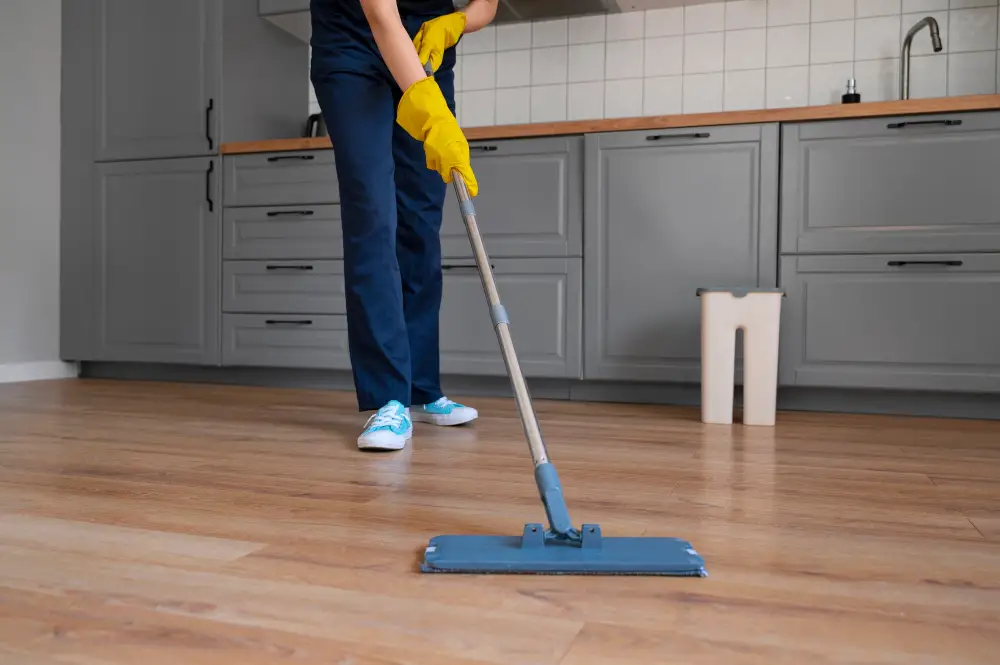
Whether it’s water, oil, or any other liquid, spills can make floors slippery and dangerous. That’s why it’s important to address spills immediately when they happen.
If you spill something on the floor while cooking or cleaning up after a meal, don’t wait to clean it up. Use a mop or absorbent cloth to wipe away any excess liquid and then use a cleaning solution appropriate for your flooring type.
It is also essential that you dry off wet areas thoroughly with towels after mopping them so that no moisture remains on the surface which could cause someone else to slip later on.
Preventing Spills
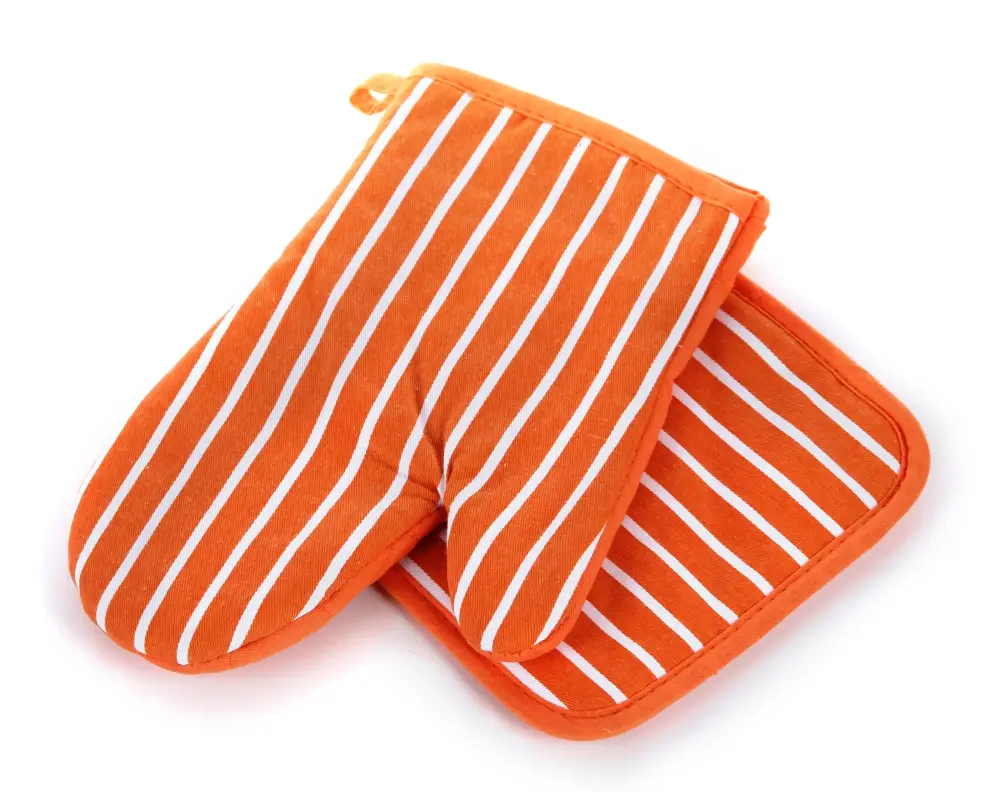
To prevent spills, it’s important to be mindful when cooking or carrying hot liquids. Always use pot holders or oven mitts when handling hot pots and pans, and make sure they’re placed on a stable surface before adding ingredients.
When pouring liquids from containers, do so slowly to avoid splashing. If you’re using a blender or food processor, make sure the lid is securely fastened before turning it on.
Another way to prevent spills is by keeping your countertops clutter-free. Remove unnecessary items that could get knocked over easily while cooking.
Proper Handling of Appliances
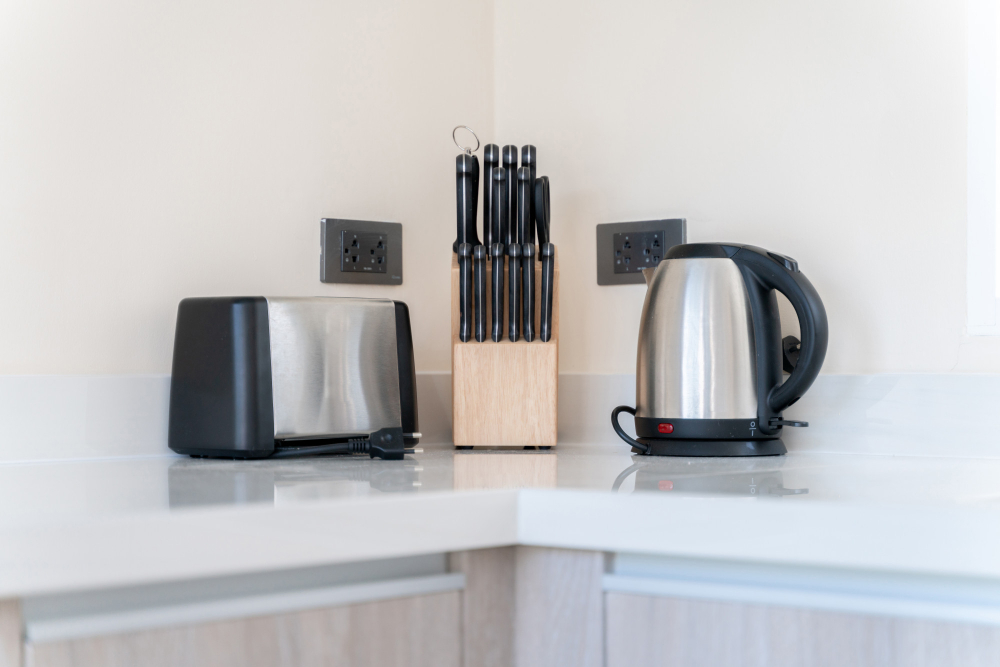
When using electrical appliances such as blenders, mixers, and food processors, always make sure that the cords are in good condition and away from water or heat sources. Never use an appliance with wet hands or when standing on a wet surface.
When handling hot appliances like ovens and stovetops, use oven mitts or potholders to protect your hands from burns. Always turn off the stove burners before leaving the kitchen even for just a few minutes.
It’s important to read the manufacturer’s instructions carefully before using any new appliance in your kitchen. This will help you understand how it works and how to operate it safely.
Safe Handling of Sharp Objects
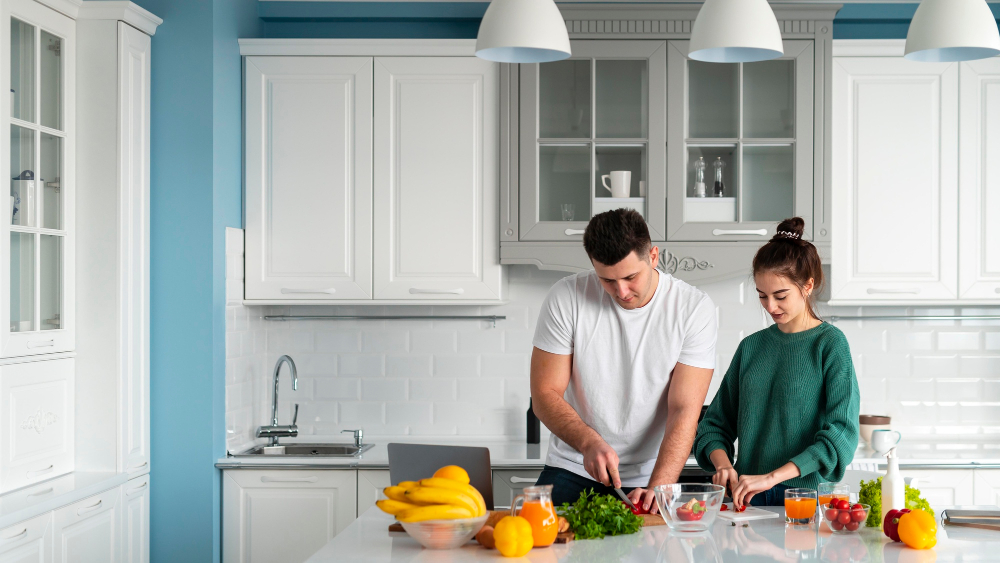
They can also be dangerous if not handled properly. To prevent slips and falls caused by sharp objects in the kitchen:
- Always use a cutting board when using sharp knives or other utensils.
- Keep your fingers away from the blade while cutting food.
- Use a knife with a comfortable grip that fits well in your hand to avoid slipping.
- Never leave sharp objects lying around on countertops or tables where they could fall off and cause injury.
By following these simple tips for safe handling of sharp objects, you can reduce the risk of accidents occurring while preparing meals.
Use Caution With Hot Liquids

Whether you’re making tea, coffee, or cooking with boiling water, it’s important to use caution when handling hot liquids. Always keep hot pots and pans away from the edge of counters or tables where they can be knocked over accidentally.
When pouring hot liquids into cups or containers, make sure to pour slowly and steadily while keeping your hands steady. Use oven mitts or pot holders to protect your hands from heat when handling hot pots and pans.
If you have young children at home, it’s essential to teach them about the dangers of hot liquids in the kitchen. Keep all appliances that produce heat out of reach for children such as kettles on high shelves so that they cannot be pulled down by curious little ones.
Ladder & Step Stool Safety
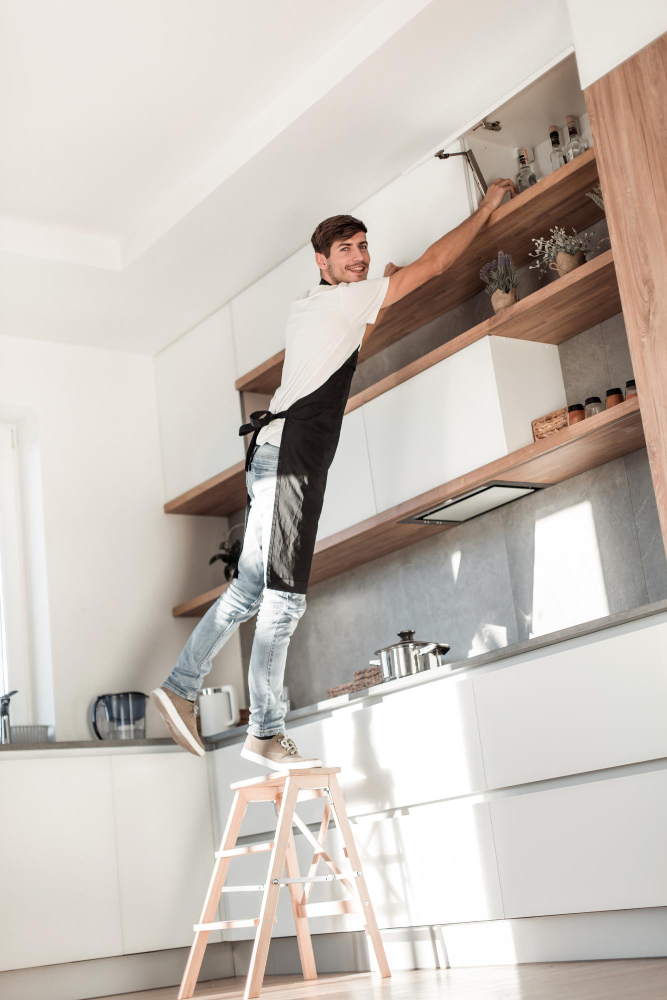
It’s important to choose the right type of ladder or stool for the job and ensure it’s stable before use. When using a step stool, make sure it has non-slip feet and is placed on a flat surface.
Avoid standing on chairs, tables, or other unstable surfaces as they can easily tip over.
If you need to reach high shelves or cabinets frequently, consider installing pull-down shelving units that bring items within easy reach without requiring ladders or stools.
Store Heavy Items Low
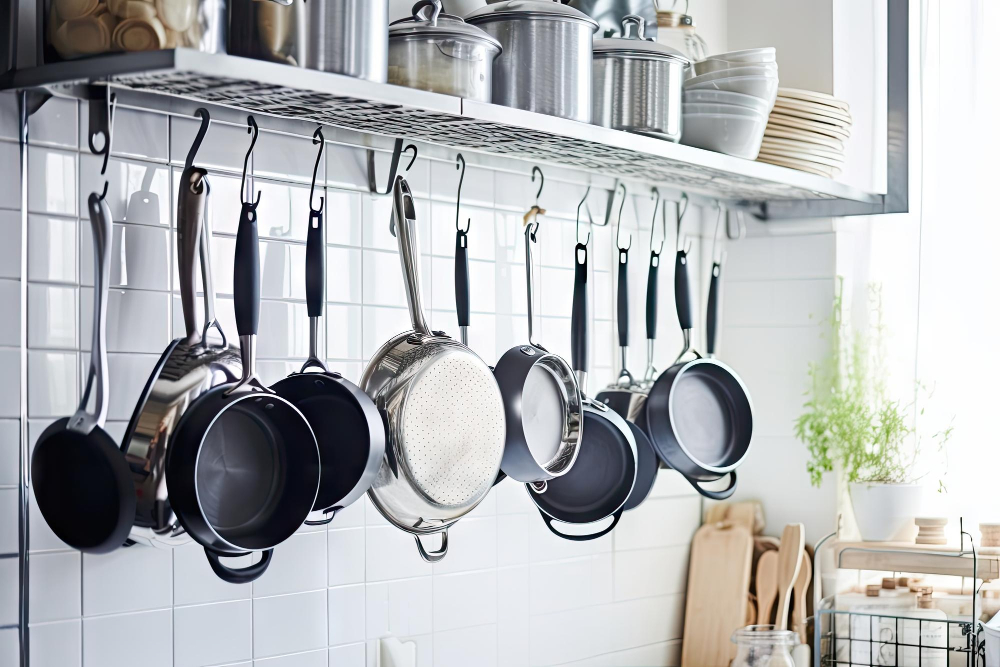
Heavy objects stored at a high level can easily fall and cause serious injury. For example, if you store your cast iron skillet on a high shelf and accidentally knock it off while reaching for something else, the consequences could be disastrous.
To prevent this from happening, make sure that all heavy items are stored at waist height or lower. This includes pots and pans as well as small appliances like blenders or food processors.
If you have limited storage space in your kitchen, consider investing in some wall-mounted shelves or hooks to keep heavier items within easy reach without taking up valuable counter space.
Organize Cabinets & Shelves
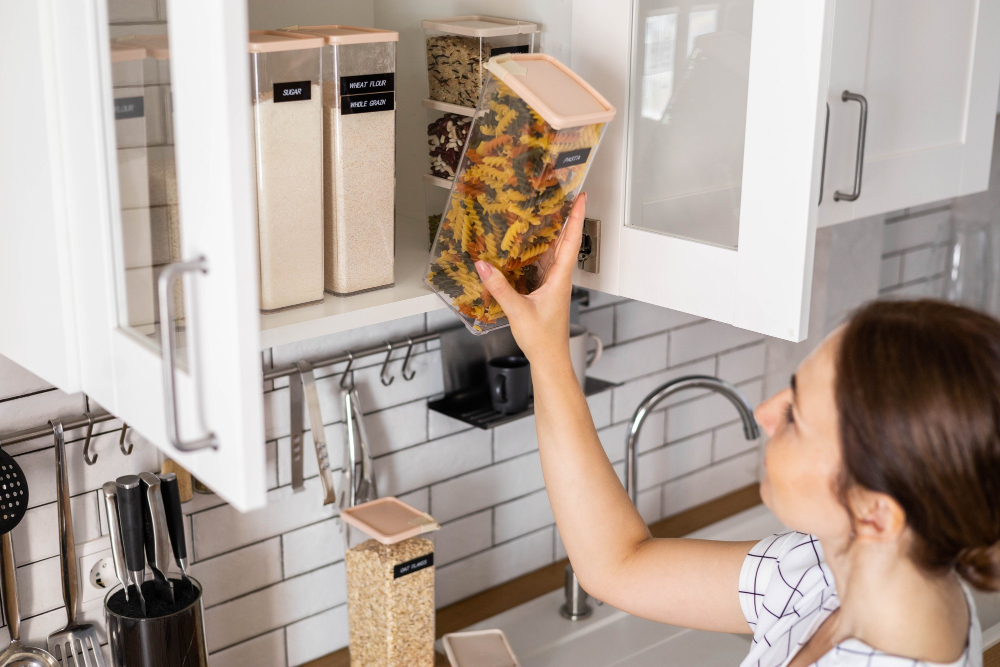
One of the best ways to prevent accidents is by organizing your cabinets and shelves properly. Start by removing any items that you don’t use regularly or are expired.
This will free up space and make it easier to find what you need.
Next, group similar items together so that they’re easy to locate. For example, keep all your baking supplies in one cabinet or drawer and store pots and pans near the stove.
Consider using shelf risers or organizers to maximize storage space while keeping everything within reach. You can also install pull-out drawers in lower cabinets for easy access without having to bend down too far.
Storage Solutions
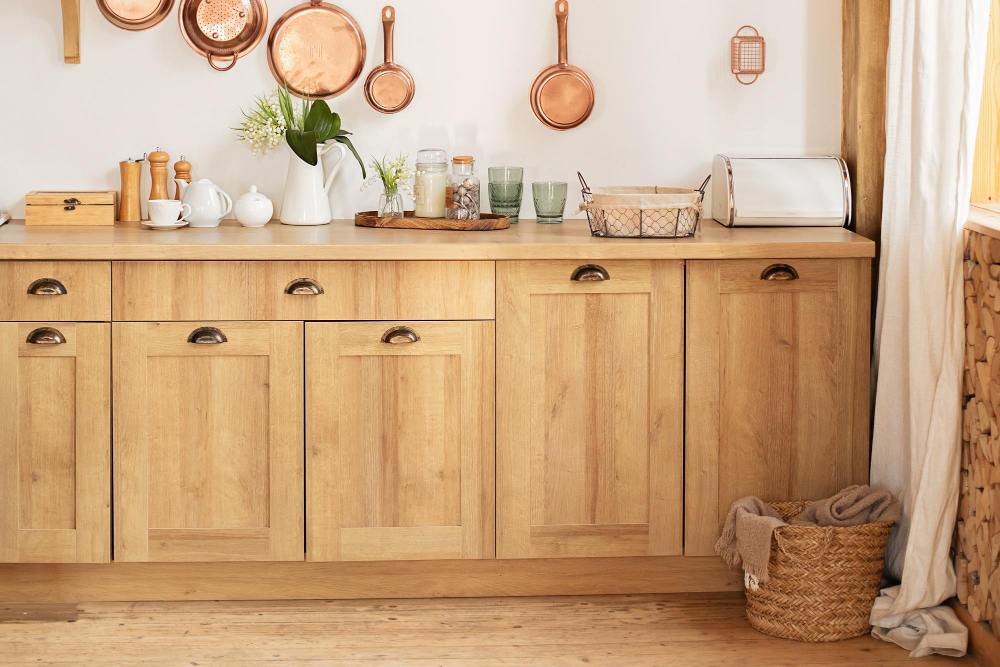
When items are stored haphazardly, it can be difficult to find what you need quickly, leading to spills or accidents. Consider investing in pull-out drawers or lazy susans for corner cabinets so that everything is easily accessible.
Store heavy items low on shelves so that they’re not at risk of falling if bumped into accidentally. Keep frequently used items within reach on lower shelves as well.
If you have limited cabinet space, consider using wall-mounted racks or hooks for pots and pans instead of storing them inside a cabinet where they could fall out when opened.
Adequate Lighting
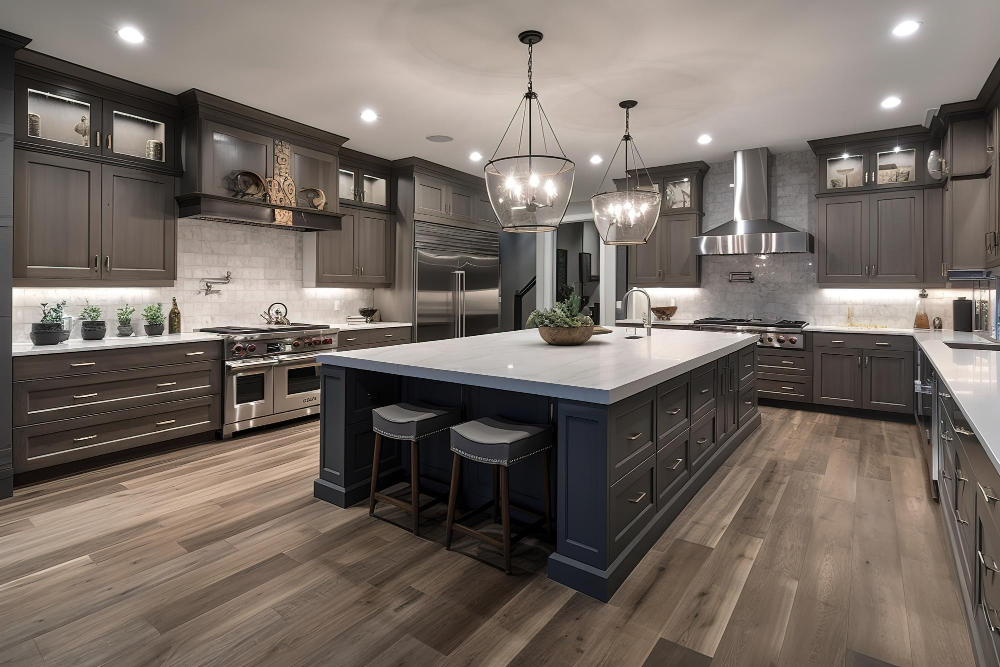
A well-lit kitchen can help you see potential hazards and avoid accidents. Make sure your kitchen has adequate lighting by installing bright overhead lights or under-cabinet lights that illuminate workspaces.
If your current lighting is dim or inadequate, consider upgrading to brighter bulbs or adding additional light fixtures. You may also want to install motion-sensor lights that turn on automatically when someone enters the room.
In addition to improving safety, good lighting can also enhance the overall look of your kitchen.
Proper Footwear
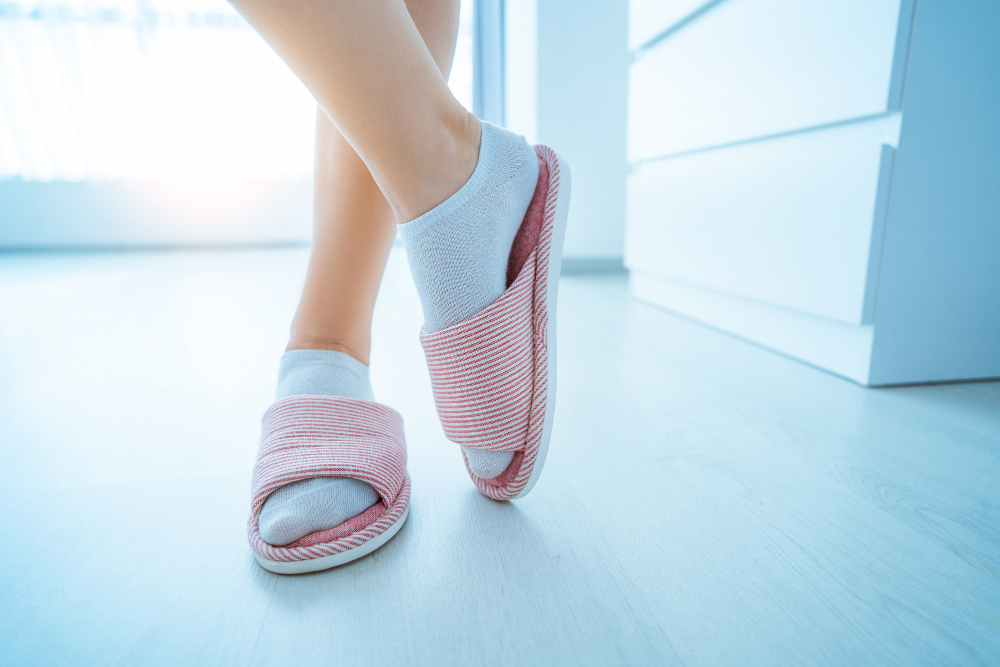
Avoid walking around barefoot or wearing socks as they can easily slip on smooth surfaces. Instead, opt for shoes with non-slip soles that provide good traction on wet floors.
Closed-toe shoes are also recommended to protect your feet from sharp objects such as knives or broken glass. High heels, flip flops, and sandals should be avoided when cooking as they offer little support and stability.
It’s important to make sure your footwear fits properly to avoid tripping over loose-fitting shoes or laces.
Educate Family Members
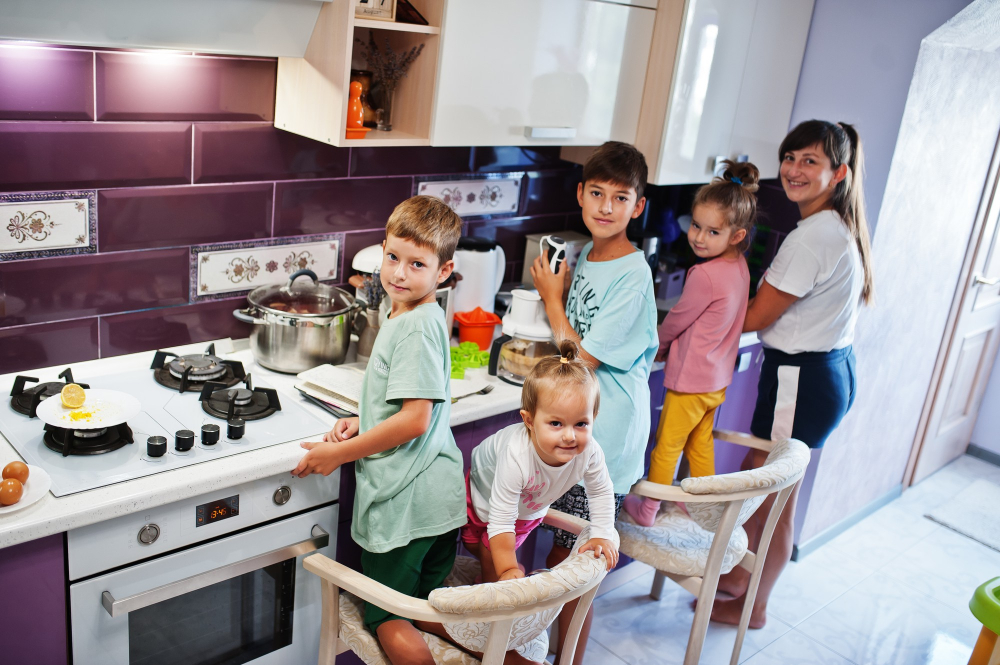
Educating your family members, especially children, is crucial for maintaining a safe environment. Make sure they understand the importance of keeping walkways clear and avoiding running or playing in the kitchen area.
Teach them how to handle appliances safely and use caution when handling sharp objects.
Encourage everyone to report any spills or hazards immediately so that they can be addressed promptly. It’s also important to establish rules around using step stools or ladders safely and storing heavy items low where they are less likely to fall.
By educating your family members on proper safety practices in the kitchen, you’ll create a culture of awareness that will help prevent slips and falls from occurring. Remember: it only takes one accident for someone to get hurt – so take every precaution necessary!
FAQ
What are 3 ways to prevent slips and falls?
To prevent slips and falls, ensure floor cleanliness without using slippery cleaners, maintain clear walkways free from hazards like cords and clutter, and utilize handrails on stairs.
What type of flooring materials can be installed to minimize the risk of slipping in the kitchen?
Non-slip flooring materials, such as rubber, cork, and vinyl, can be installed in the kitchen to minimize the risk of slipping.
How can proper lighting and visibility in the kitchen contribute to the prevention of slips and falls?
Proper lighting and visibility in the kitchen can contribute to the prevention of slips and falls by making it easier to spot potential hazards, ensuring a safer environment for movement and activity.
What are the best practices for organizing and storing kitchen items to avoid tripping hazards?
The best practices for organizing and storing kitchen items to avoid tripping hazards include keeping walkways clear, storing items within reach, and using appropriate containers for organization.




